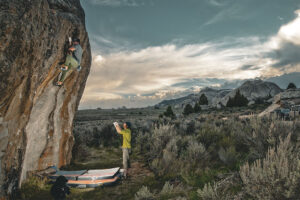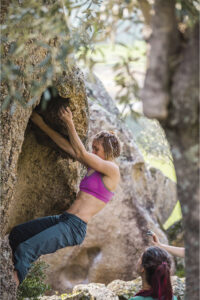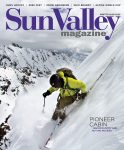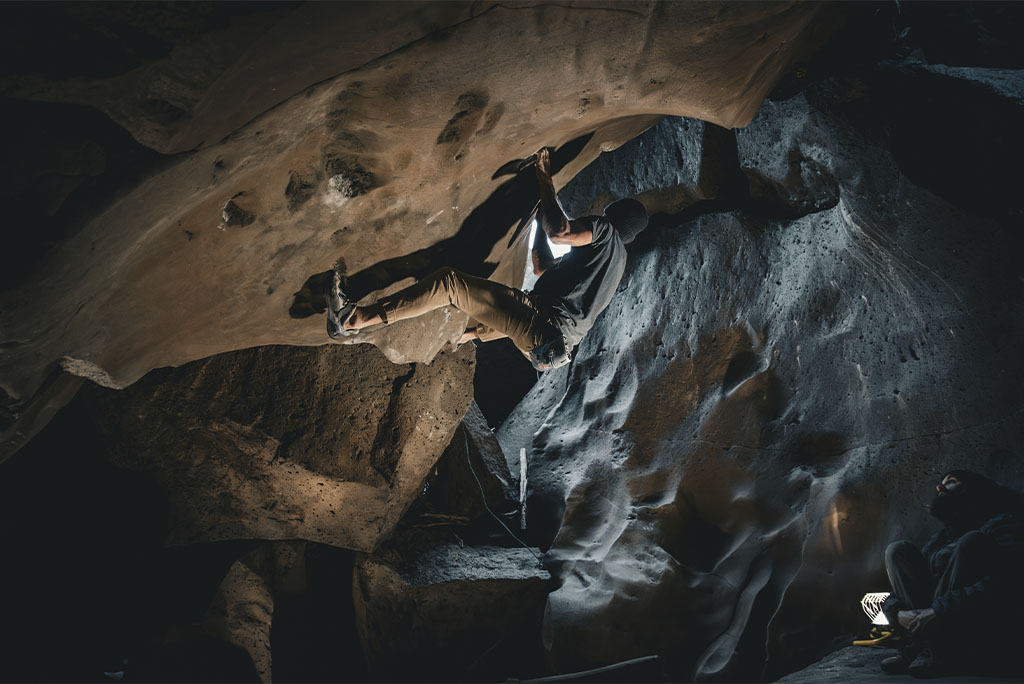To experience or excel in bouldering, one will have to drive great lengths. Despite there being bouldering within the Wood River Valley, finding the best landscapes, you’ll need to go out of town or be content with the indoor climbing gyms. However, for those who become captivated by this unique pursuit, the journey proves worthwhile.
Bouldering is a form of rock climbing that simplifies an already simple sport. It emphasizes working short but usually intense “problems” on large boulders or short rock faces. Unlike traditional or sport climbing, there are no ropes, harnesses or protective gear involved. In most cases, the climber is never more than fifteen feet off the ground. The focus lies on making powerful moves rather than on endurance.
Originally conceived as a training exercise to prepare for larger objectives, bouldering slowly started gaining a reputation as its own discipline in the mid-20th century. John Gill, regarded as the “father of modern bouldering,” was a gymnast with an affinity for nature who found he could challenge himself by climbing intensely close to the ground. He began bouldering in the 1950s long before landing or crash pads and rubber-soled climbing shoes had been invented. He was the first person to use chalk, helping him grip the rock better without having to wipe sweaty palms on his pants or in the dirt, and now all climbers can be seen with small bags of chalk buckled to their waists.

Today, bouldering has its own substantial following. Most climbing gyms have dedicated bouldering caves, which are short and overhanging walls with brightly colored plastic holds ranging in size and shape. There are bouldering guidebooks and online forums where people discuss bouldering problems and sequences. There are indoor and outdoor competitions and sponsored athletes. Just Google the name, Ashima Shiraishi or Daniel Woods. Its difficulty rating scales evaluate factors based on the difficulty of holds, movement, and sequence. The most used are the Font and the V Scales. The Font Scale, named for Fontainebleau, France, the birthplace of bouldering, is used in Europe and Asia. It uses a numeric scale starting from 1-9, with the difficulty increasing as the number goes up.
Additionally, letters (a, b, c) are added to further refine the difficulty within each grade. The V-Scale, used in the U.S., South America and Australia, ranges from V0 (easiest) to V17 (most difficult). As of June 2023, only six people have reportedly achieved a V17/9a climb.
Bouldering remains an accessible entry point into the world of rock climbing, where you can gain strength and skill for other climbing goals. The gear is minimal, requiring only a foam pad, sticky, small shoes, and some chalk. While going with friends is a good idea to encourage each other and shift crash pads around, it can be done alone or with your dog.
Torria Rossin can sometimes be found trudging her way up cheatgrass hillsides of Rock Creek out Croy near Hailey, Idaho or around the shaded banks of Red Fish Lake in Stanley, with her crash pad on her back and her dog Zander at her side, in search of some solitary bouldering.
Torria has been a backpacking, hiking and climbing guide for Sawtooth Mountain Guides for the past three years. Originally a surfer from California, she didn’t begin climbing until moving to Idaho. Her relationship with bouldering is nontraditional. She started with outdoor sport climbing, drawn to the technical gear and safety systems it requires. She started including bouldering in her repertoire to enhance her movement skills.
“It gave me more confidence with my strength and endurance,” Torria explains. “In bouldering, there is less improvisation than with other climbing; you need to perform the sequences right.”
There is an addictive form of progression with bouldering. Some may work on a “problem” for days or weeks before cleanly ascending it, but there is a deep sense of accomplishment with each small advancement, like making the next level of a video game.

“The more I do it, the more excited I get about it,” Toria says.
There are many meccas for bouldering in the U.S., like the American climbing stopping grounds of Yosemite Valley, the glacially placed boulders in Bishop, California, at the foot of the Sierra Mountains, the strikingly austere desert of Joshua Tree National Park, the overhanging quartz slabs in The Gunk’s New York! Or the accessible, black-streaked sandstone rocks of Joe’s Valley, Utah. The list goes on—just not in Idaho, really.
However, focusing on grading and glory may miss the best part of bouldering: exploring your own outdoor gym alone or with friends. As Torria aptly summarizes, bouldering is about discovering a spot, wandering through it, and embracing what it offers and teaches.
Where to go?
Experience the thrill of climbing at the Wood River YMCA climbing wall and bouldering cave, conveniently open Monday through Friday from 3:30 p.m. to 7:30 p.m. and Saturday from 2 p.m. to 4 p.m. Closed Sundays.


